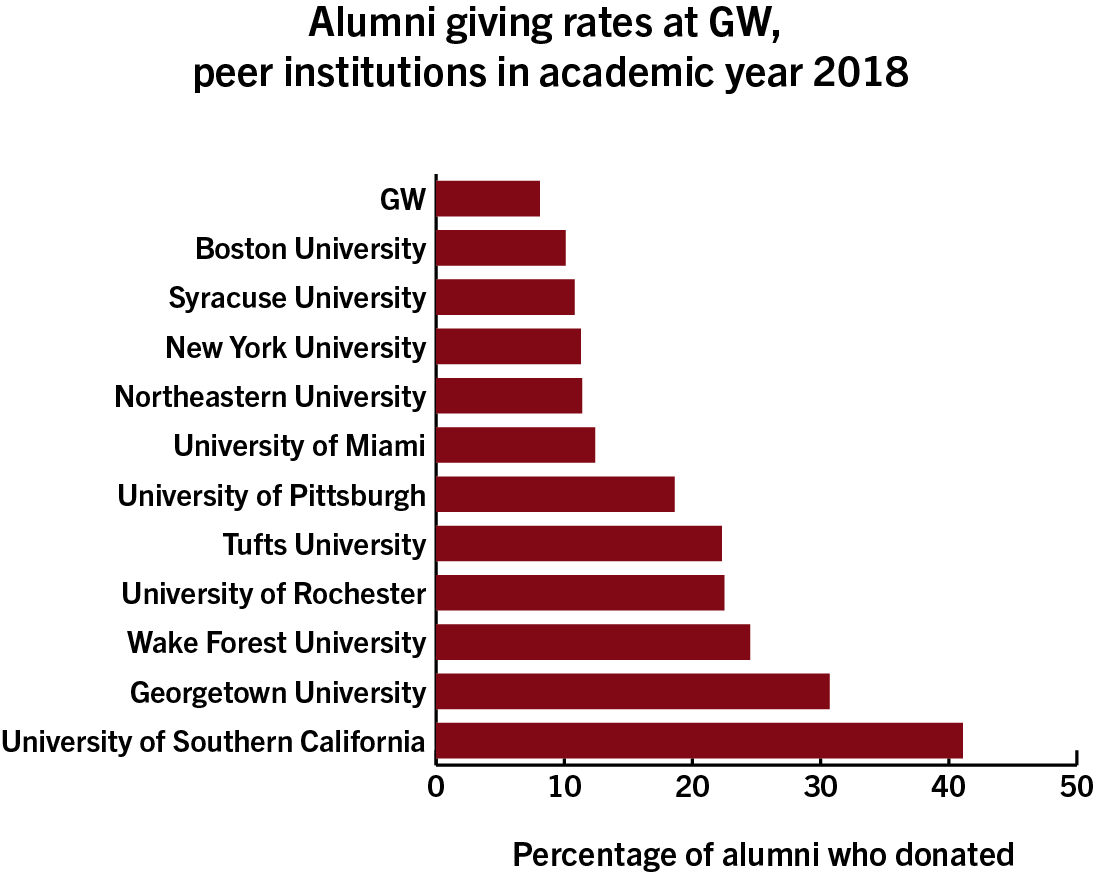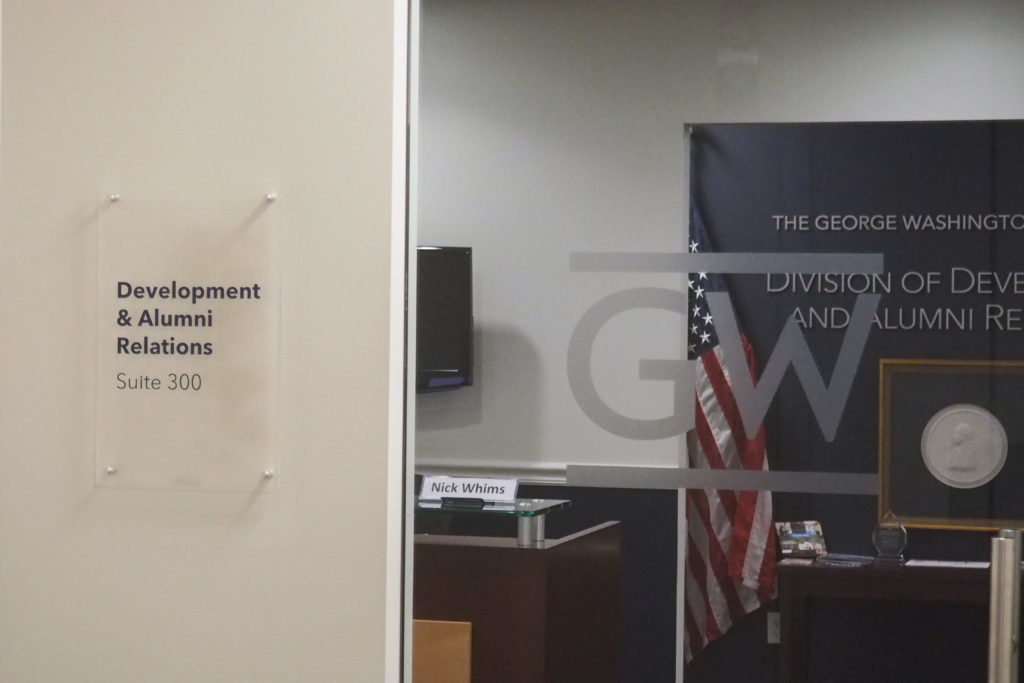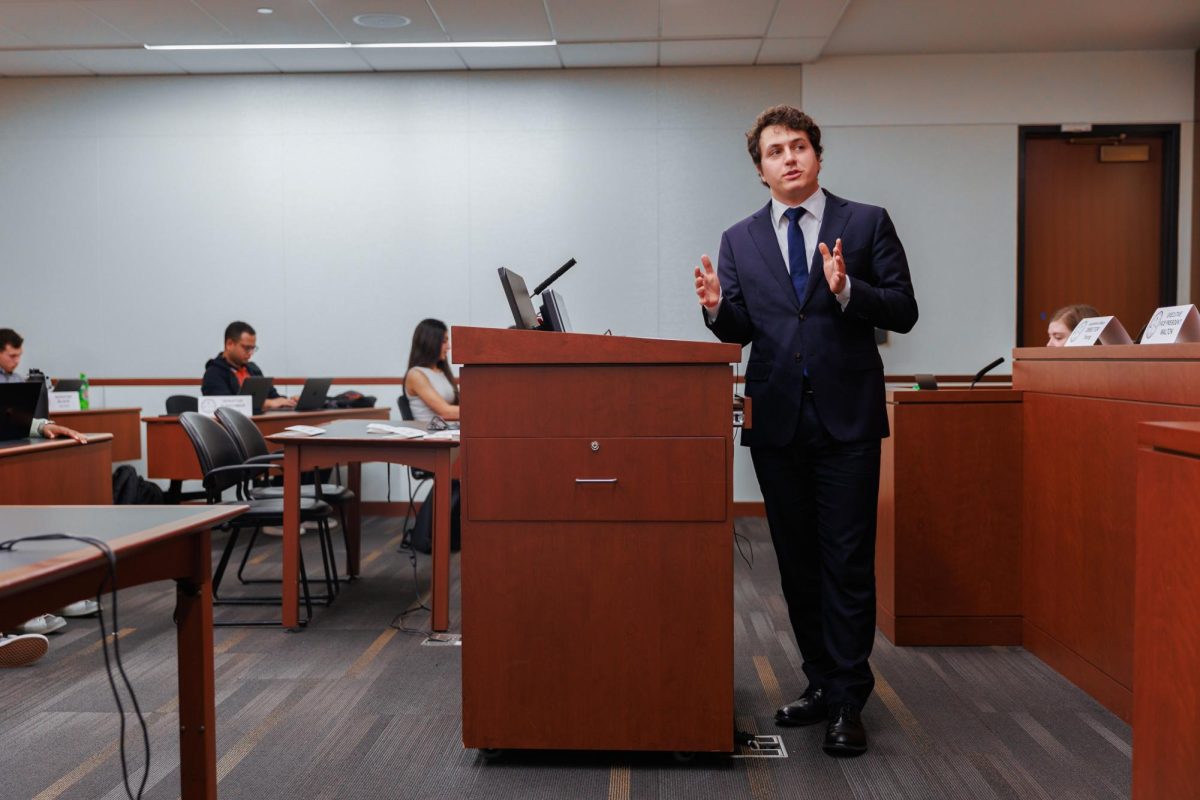The University notched the lowest alumni giving rate among its 12 peer institutions for the second year in a row.
The percentage of alumni who contributed financially to the University fell to 8.1 percent in the 2018 academic year, compared to 8.8 percent the previous year, according to U.S. News and World Report data. The average alumni donation rate at GW’s 12 peers increased from 18 percent to 19.4 percent during the same year, according to the data.
The University of Southern California clocked in at the top of GW’s peer schools, with 41.1 percent of alumni making a donation to the school last year.
Matt Lindsay, the assistant vice president of marketing and communications in the Division of Development and Alumni Relations, said alumni donations impact GW by funding activities like Alternative Break, the New Venture Competition faculty research and scholarships.
“We appreciate the many GW graduates who make philanthropic commitments to the University and make every effort to communicate to alumni the positive impact and outcomes that result from their individual and collective giving,” he said in an email.

Alyssa Ilaria | Graphics Editor
He said officials worked to attract donors through phone, mail and digital outreach as well as individual conversations with staff. Fundraising office staff made nearly 5,000 visits to donors in fiscal year 2019 and set goals of retaining 64 percent of donors annually and reaching 16,000 alumni donors.
“We strive to connect with GW graduates in ways that add value and are of interest, as well as to encourage alumni to give back to the areas of GW that hold special meaning for them personally,” Lindsay said.
He added that officials have brought a focus of “quality” to alumni engagement and fundraising efforts, like through updating Colonials Weekend. This year’s event saw a record turnout since the program was revamped in 2017.
Lindsay said more than 14,200 alumni made a donation to the University in fiscal year 2019, which ran from July 1, 2018 through June 30, 2019. He said that during that period, GW clocked its third-best fundraising year ever, raising more than $122.6 million from more than 22,000 donors – even as GW lagged behind peers in alumni giving.
University President Thomas LeBlanc established philanthropy and constituent engagement as one of his five top initiatives when he arrived at GW two years ago. He has met with alumni at stops in six cities across the country and in London since he arrived at the school.
Alumni relations experts said developing a strong philanthropy culture among students, families and alumni by educating them about the impact philanthropy has on university advancement could boost donation rates.
Marci Paton, the executive director of annual giving at Villanova University, said institutions can “start building” a “culture” of philanthropy among students before they graduate and then work to retain young alumni as donors.
“We still need to work really hard to retain those donors once they are young alumni,” she said. “Your expenses are pretty big compared to what your first paycheck might be.”
Senior classes at GW have historically coordinated an annual gift campaign to raise money for the University.
Paton said GW’s alumni giving rate is on par with many public universities despite lagging behind its peers.
She said allowing alumni to donate to specific causes that personally appeal to them has helped her school attract donations. Donors giving gifts online to GW can earmark their donation for a variety of departments and causes, including scholarship and athletic funds, according to the University website.
“We are a donor-centric environment and that means we want to support the donors and give back to whatever area means the most to them, and that has really helped us increase participation,” Paton said.
Mark Owczarski, the assistant vice president of university relations at Virginia Tech, said many universities experience a single-digit alumni giving rate but added that officials should always strive to increase donations because they financially bolster a university’s operations.
“But if GW aspires to be an uncommon University – meaning to be better than most, to be a real difference-maker, to really influence and change people’s lives, it needs to do better than that,” Owcarsky said.
He said administrators can increase alumni participation by instilling into students the belief that they have a “lifelong commitment” to pay their college experience forward to the next generation of students.
“It’s like being a parent,” he said. “You give a lot to your kids and then they grow up and they move on and they become parents. Then what do they do? They give to their kids, and so on and so on.”
Katie Acuff, the associate vice president for advancement at Tulane University, said alumni participation rates are an “imperfect science.” Acuff said donations’ significance differs among stakeholders like college ranking organizations and universities themselves.
“To many popular ranking organizations and foundations, it shows that alumni are satisfied with their institutions and that they see them as worthwhile investments,” she said in an email. “To schools who enjoy high participation rates, it is a badge of honor to be part of the collective effort.”





